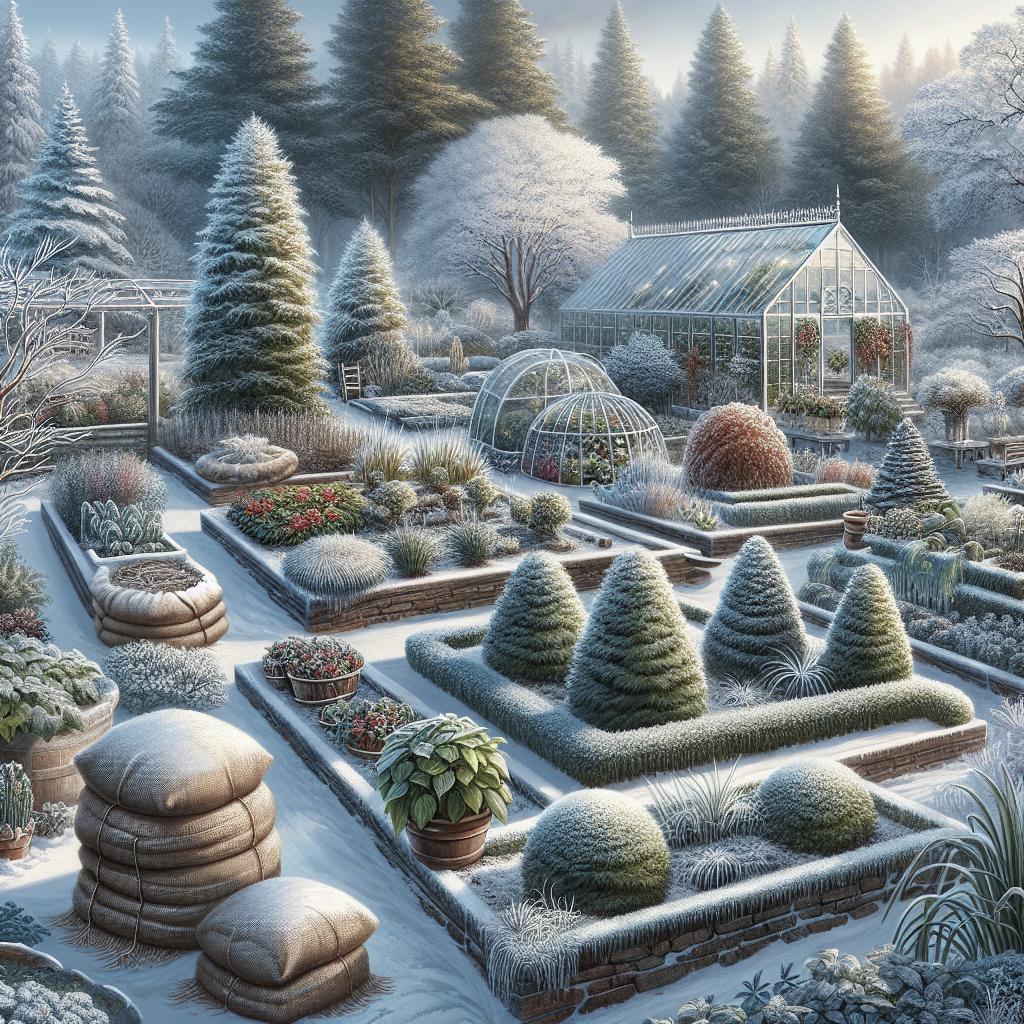Winter gardening can seem daunting at first, but with the right preparations and techniques, you can create a vibrant and flourishing outdoor space that thrives even in the coldest months. In this post, we’ll dive into some of the best practices for winter gardening, starting with getting your garden ready for winter. We’ll explore ways to protect your flowering plants from the harsh elements, highlight the key dos and don’ts for maintaining a winter garden, and ultimately help you nurture a green sanctuary amidst the snow and frost.
Get Gardening
There is a unique charm in gardening during the winter season. To begin with, assess your garden’s layout and make a plan for the colder months. Start by clearing fallen leaves, expiring plants, and any debris that could become a breeding ground for pests or diseases. Transition your garden beds by adding compost to replenish nutrients and improve soil structure. Next, consider planting winter vegetables like kale, spinach, and radishes. These cold-hardy plants thrive when temperature drops and can offer fresh produce throughout the season. Additionally, perennials that are inherently designed to withstand winter conditions can also be a great addition. Plan for staggered planting times to ensure that your garden has continual growth and harvests. Lastly, ensure that you properly mulch your garden beds. Mulch acts as an insulating layer, helping to regulate soil temperature and moisture levels. Use organic material like straw, leaves, or wood chips to achieve the best results. This practice not only protects the plant roots but also enriches the soil as it decomposes.
How to Protect Flowering Plants
Winter is tough on flowering plants, but with a bit of TLC, you can help them survive and even flourish. Firstly, move potted plants indoors or to a sheltered area such as a garage or greenhouse. This prevents them from being exposed to freezing temperatures. If indoor space is an issue, grouping pots together can create a microenvironment that retains warmth. For garden-bound plants, the use of horticultural fleece or frost cloth can offer protection against frostbite. This breathable fabric allows light and moisture to reach the plants without the harshness of frost. It can be laid directly over the plants or suspended using stakes, depending on the size of your flowering plants. Additionally, consider windbreaks for exposed garden areas prone to strong winter winds. These can be created using structures such as fences or hedges. By shielding your plants from wind, you also reduce desiccation and cold stress—key factors in maintaining healthy winter gardens.
Winter Garden Dos
One critical ‘do’ for winter gardening is watering wisely. Plants may require less water during winter, but they still need moisture to survive. Water plants during the warmer parts of the day to ensure the water reaches the roots before freezing. Reduce the frequency but be consistent to prevent the soil from drying out completely. Another essential task is pruning. Remove any dead or diseased branches to promote growth and prevent the spread of pathogens. Pruning also helps by increasing air circulation and reducing the risk of fungal infections, which can be more problematic in damp winter conditions. Lastly, consider investing in cold frames or row covers. These structures can provide an additional layer of protection, creating a mini greenhouse effect. They help retain heat and can extend the growing season for several weeks. Cold frames and row covers are particularly useful for winter vegetables and young seedlings.
Winter Garden Don’ts
Avoid the common mistake of over-fertilizing during the winter. Plants grow more slowly during the colder months, and adding extra nutrients can lead to atypical growth or even damage the roots. Instead, focus on maintaining a balanced soil with organic matter added during the planting phase. Do not neglect to monitor your garden for pests and diseases, thinking they are only summer problems. Some pests, such as aphids and spider mites, thrive in cooler temperatures, and fungal infections can take hold in damp, mild conditions. Regular inspections and appropriate treatments are crucial for a healthy winter garden. Lastly, resist the urge to start new plantings too early. While it might be tempting to get a head start on spring, planting too soon exposes seedlings to the risk of late frost, which can be fatal. Use a soil thermometer to ensure the ground has sufficiently warmed before planting new seeds or transplants.
“`html
| Section | Key Points |
|---|---|
| Get Gardening | Clear debris, add compost, plant winter vegetables, mulch garden beds |
| How to Protect Flowering Plants | Move pots indoors, use horticultural fleece, create windbreaks |
| Winter Garden Dos | Water during warm parts of the day, prune dead branches, use cold frames |
| Winter Garden Don’ts | Avoid over-fertilizing, monitor for pests, don’t plant too early |
“`


